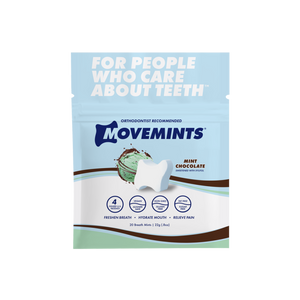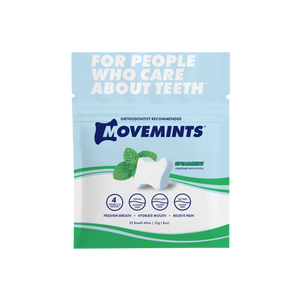Are you team brackets or team clear aligners?
This article about the battle between braces and Invisalign will help you decide for yourself.
We'll align the facts so you can decide which treatment option is right for your smile. Get ready because we're about to share a lot of details details on how these tooth straightening methods compare. Whether it's cost, looks, or effectiveness, we've got you covered.
Let's smile wide and dive right into teeth-straightening secrets.
About Traditional Braces

Traditional metal braces are orthodontic devices made of metal or ceramic brackets and wires that are bonded to the teeth. They apply gentle pressure over time to slowly move teeth into their proper position. Braces work by placing brackets on each tooth that are then linked together with an archwire. The archwire applies forces to the teeth, encouraging them to move into the desired alignment. Small elastics or rubber bands may also be used to help align the jaw and bite. The orthodontist will make adjustments at periodic visits, tightening the wire and changing elastics as needed. For traditional braces, treatment time ranges from 12-36 months, depending on the changes that are needed.
Benefits of Braces
Braces offer predictable and effective treatment for various alignment issues like crooked teeth, gaps, overbites, and crossbites. By straightening teeth, braces improve oral health and hygiene. Orthodontists have extensive experience with braces, providing predictable results when patients follow instructions. Many dental insurance plans partially cover braces, making them affordable for more patients than clear aligner therapy. Different types are available, including lingual braces and ceramic braces.
Explaining Invisalign and How it Works

Invisalign treatments consist of clear plastic aligners that are custom-made to fit over the teeth and incrementally move them. The aligners are switched out for new ones roughly every 1-2 weeks during treatment. Each new set applies light forces to gradually shift the teeth into the desired position based on the treatment plan mapped out by your orthodontist. Using 3D imaging technology, Align Technology (the makers of Invisalign) creates a digital simulation of how your teeth will move with each aligner.
Benefits of Invisalign
Invisalign's clear, removable plastic aligners offer an aesthetic and comfortable alternative to braces. Aligners are removable for trouble-free eating and for brushing and flossing. Treatment averages just 9-18 months, shorter than traditional braces. Invisalign allows you to maintain normal speech and continue sports and other activities without restriction. When used properly, Invisalign achieves effective results on par with braces, giving you the beautiful smile you want with greater comfort and convenience. Plus, without wires, most people won't notice you're straightening your teeth.
Main Differences Between Braces and Invisalign
Let's compare braces and Invisalign aligners!
- Braces have metal brackets and wires, while Invisalign uses clear, removable plastic aligners. Invisalign is virtually invisible!
- In terms of comfort, the smooth plastic of Invisalign is more comfortable overall but must be removed for eating and cleaning - braces stay put but have more food limitations. Both require great oral hygiene.
- Treatment time averages 9-18 months for Invisalign and 12-36 months for braces. Invisalign allows for easier eating and brushing.
- The Invisalign aligners cost can range from $4,000-$7,000 for Invisalign, and typically braces cost $4,000-$7,000. However, costs vary depending on the complexity of the treatment required, location, check-ups, and any additional expenses or fees during the treatment.
- Braces are better at handling some complex bite issues. Your orthodontist will determine the best treatment for your situation. When worn 20-22 hours per day, Invisalign aligners straighten teeth as effectively as braces.
Making the Right Choice: Braces or Invisalign?

Choosing between braces or Invisalign depends on your unique smile goals and lifestyle. You'll want to discuss cost, treatment time, appearance, and insurance coverage before deciding on your orthodontic treatment.
Invisalign's clear removable aligners offer discreet straightening and flexibility for eating and oral care. However, braces may work better for more complex cases and have a lower upfront cost.
Ultimately, Invisalign is an excellent choice for straightening with optimal comfort and freedom. The clear removable aligners allow you to achieve an incredible smile transformation with confidence and convenience.
And don't forget - using Movemints can help optimize your Invisalign experience! The mints promote oral health and hygiene between aligner changes.
How Movemints Help with Invisalign

Movemints can be a big help with Invisalign.
With benefits for health, hygiene, and ease, Movemints are the ideal supplement for a flawless Invisalign smile.
Their unique shape seats the aligners properly for a more comfortable fit so your teeth can shift according to the plan. Pop one in after after your aligners are in place to freshen breath and wash away bacteria and gunk - thanks to xylitol. Movemints also keep your mouth from getting dry.
The best part is you can toss these mints in your bag for on-the-go aligner care. Movemints will motivate you to wear your aligners as directed by making them more comfortable and boosting your confidence.
Braces vs Invisalign FAQ
Is Invisalign faster than braces?
In general, Invisalign takes less time to straighten teeth than traditional braces. The average Invisalign treatment is 9-18 months, while braces take 12-36 months on average. However, treatment time depends on your custom treatment plan.
Can Invisalign correct severe issues?
While best for mild to moderate alignment issues, Invisalign can treat some severe cases as well. Consult an orthodontist to see if Invisalign is right for your specific needs. Braces may be required for complex bite issues.
Are braces or Invisalign more painful?
Most patients report both options cause mild discomfort, especially when adjusting to a new aligner or after a braces wire is tightened. Invisalign aligners are smooth plastic, so they tend to cause less mouth irritation than braces.
Can you eat with Invisalign?
No, Invisalign aligners must be removed for all eating and drinking except for cool water and Movemints. Braces do not need removal for eating, but certain foods that can damage braces must be avoided.

















